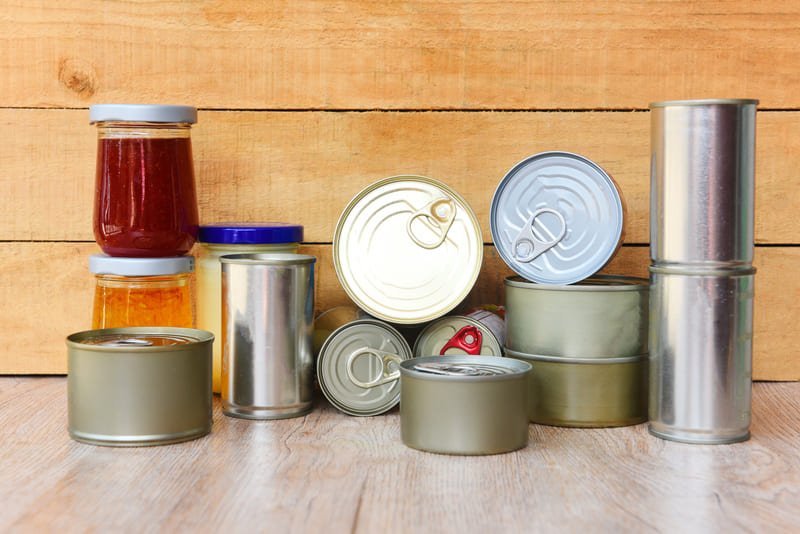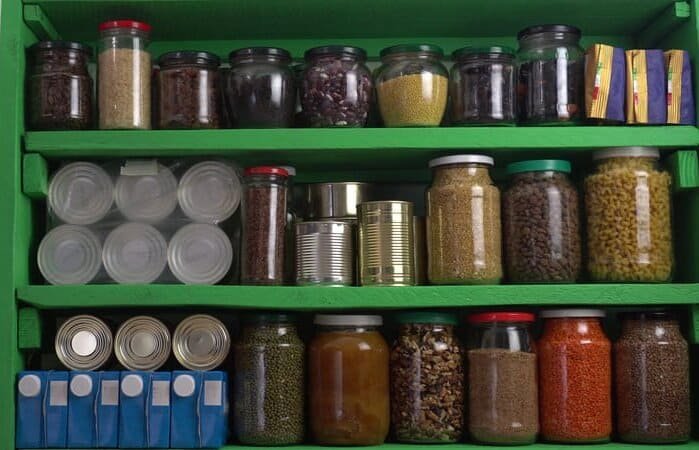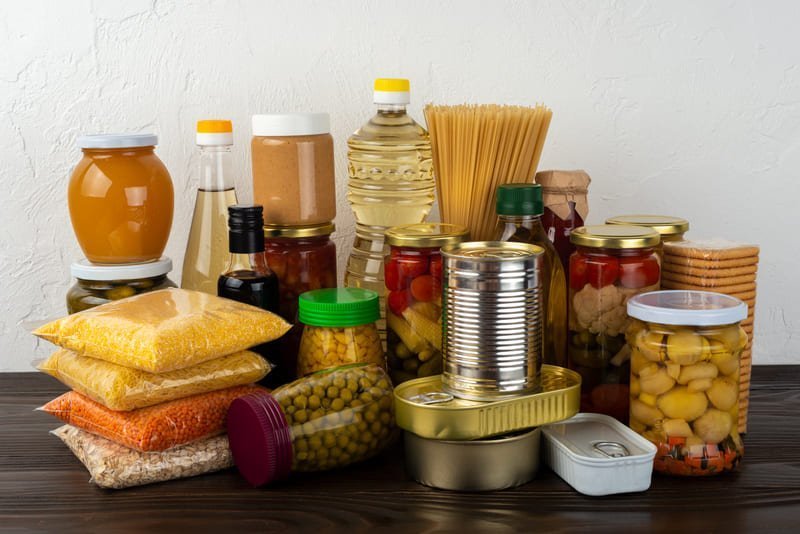When it comes to emergency preparedness, having a supply of survival foods is essential. In times of crisis, you’ll need high-energy and high-protein foods to fuel your body. It’s important to have a variety of non-perishable and long shelf-life options that can last for extended periods of time. From canned foods to freeze-dried meals, there are plenty of options to choose from. In this article, I’ll share my top picks for survival foods that are perfect for any emergency situation. Whether you’re stocking up for a natural disaster or preparing for a long-term survival scenario, these foods will provide you with the nutrition you need to stay ready and resilient. So let’s dive in and explore the best survival foods to have in your pantry.
In this section, I will focus on non-perishable food items with a long shelf life. These are the foods that can be stored for extended periods of time without spoiling. Canned foods are a popular choice for survival situations due to their durability and long shelf life. Examples include canned meats, vegetables, and beans. These foods are packed with essential nutrients and can be easily incorporated into meals during an emergency. Additionally, dried fruits, nuts, and granola bars are also excellent non-perishable options to consider. Remember to regularly check expiration dates and rotate stock to ensure freshness.
Key Takeaways:
- Non-perishable foods with long shelf life are crucial for emergency preparedness.
- Canned foods, such as meats, vegetables, and beans, are durable and packed with nutrients.
- Dried fruits, nuts, and granola bars provide energy and comfort during a crisis.
- Regularly check expiration dates and rotate stock to maintain freshness.
- Include a variety of non-perishable foods in your emergency preparedness kit.
Non-perishable Food Items with Long Shelf-Life
When it comes to emergency preparedness, having a supply of non-perishable food items with long shelf-life is essential. These foods can be stored for extended periods of time, providing you with a reliable source of sustenance during times of crisis. Canned foods are a popular choice for survival food storage due to their extended shelf life, often lasting for years if properly stored.
Here are some examples of canned foods for survival:
- Canned meats such as tuna and chicken
- Canned vegetables
- Canned beans
These canned foods are packed with essential nutrients and can be easily incorporated into meals during an emergency. They provide a convenient and reliable source of sustenance when fresh food may not be readily available.
In addition to canned foods, there are other non-perishable options to consider for your survival food storage. Dried fruits, nuts, and granola bars are excellent choices that provide energy and can be a source of comfort during times of crisis. They are lightweight, portable, and have a long shelf life, making them ideal for emergency preparedness.
When storing non-perishable foods, it’s important to check expiration dates regularly and rotate your stock to ensure freshness. This ensures that you always have a supply of reliable and nutritious food available when you need it most.
Freeze-Dried Survival Meals

When it comes to emergency preparedness, having a supply of freeze-dried survival meals is a smart choice. These meals are not only lightweight and compact, but they also boast a long shelf life, making them an ideal option for any survival situation.
Freeze-drying is a process that removes moisture from the food, preserving its nutritional content and flavor without the need for refrigeration. This technique helps to ensure that the meals retain their quality and taste for an extended period.
Emergency food kits often include a variety of freeze-dried meals, providing a balanced diet during crisis scenarios. These kits typically contain a range of food options such as pasta, rice, soups, and stews that can be easily rehydrated with water.
“Freeze-dried meals are a convenient option for those who may not have access to cooking facilities during an emergency,” says Mark Johnson, a survival expert. “They are easy to prepare and require minimal time and effort.”
One of the main advantages of freeze-dried survival meals is their portability. They come in lightweight packaging, making them easy to transport in your emergency kit or backpack. Whether you’re on the move or sheltering in place, these meals will provide you with the sustenance you need wherever you are.
When selecting freeze-dried meals, it’s crucial to choose high-quality options from reputable brands. This ensures that you’re getting both nutritious and delicious food choices in any survival scenario.
With freeze-dried survival meals in your emergency preparedness kit, you can be confident that you’ll have access to nourishing and convenient food when it matters most. Their long shelf life, lightweight design, and easy preparation make them one of the best survival food options available.
Survival Food Ration Packs

When it comes to emergency situations where access to fresh food may be limited, survival food ration packs are a game-changer. These specially designed packs provide essential nutrients and calories in a compact and easy-to-carry format. Whether you’re preparing for a natural disaster or planning for an outdoor adventure, survival food ration packs are an essential part of your emergency preparedness kit.
There are different types of survival food ration packs available, each offering a variety of food items to sustain an individual for a specified period of time. Two popular options include:
MREs (Meals Ready to Eat)
MREs, or Meals Ready to Eat, are complete meals that come in individual pouches. These pouches contain all the necessary components for a balanced meal, such as a main course, side dish, dessert, and beverage. One of the key advantages of MREs is their versatility. They can be consumed cold, straight from the pouch, or heated with a flameless heater included in the pack. MREs are lightweight, portable, and have a long shelf life, making them an excellent option for emergency situations.
Energy Bars
Energy bars are another popular choice for survival food ration packs. These compact bars are packed with calories and nutrients, providing a quick and convenient source of energy. They are lightweight, easy to carry, and have a long shelf life. Energy bars come in a variety of flavors and formulas, catering to different dietary needs and preferences. They are a great option for on-the-go snacking during emergencies or outdoor activities.
When choosing survival food ration packs, it’s essential to consider your dietary preferences and any specific dietary restrictions you may have. Some packs offer vegetarian or gluten-free options, ensuring that everyone’s nutritional needs are met. Additionally, it’s important to check the expiration dates on the packs regularly and rotate your stock to maintain freshness.
Overall, survival food ration packs are a reliable and convenient solution for ensuring you have the sustenance you need during emergency situations. Including these packs in your emergency preparedness kit will give you peace of mind knowing that you’re prepared for any unforeseen circumstances that may arise.
Conclusion
In conclusion, building up a stockpile of survival foods is absolutely essential for emergency preparedness. When selecting the right foods, it is crucial to take into account factors like their shelf life, nutritional value, and personal dietary preferences. Non-perishable food items, such as canned foods, are a popular and versatile choice due to their long shelf life. Additionally, freeze-dried meals offer both convenience and nutrition, making them a smart option for emergency situations. Moreover, survival food ration packs provide essential nutrients in a compact and portable format, making them ideal for inclusion in your emergency kit.
By incorporating a diverse range of these survival food options into your emergency preparedness plan, you can ensure that you and your loved ones have the necessary sustenance to withstand any crisis. Don’t forget to regularly check the expiration dates on stored foods and rotate your stock to maintain freshness. With the right selection of survival foods readily available, you can face any adversity with confidence and stay safe.
Remember, emergencies can happen at any time, so it’s never too early to start stocking up on survival foods. Don’t wait until it’s too late – take action now and prioritize your emergency food supplies. By investing in long shelf-life foods, non-perishable items, and survival food ration packs, you can build a robust survival food storage solution that will provide you with the best chance of survival in challenging situations. Stay prepared, stay vigilant, and stay safe with the best survival foods at your disposal.
FAQ
What are non-perishable food items?
Non-perishable food items are food products that have a long shelf life and do not require refrigeration. These items can last for extended periods of time and are essential for emergency preparedness and survival.
What are some examples of non-perishable food items?
Some examples of non-perishable food items include canned meats (such as tuna and chicken), canned vegetables, canned beans, dried fruits, nuts, and granola bars. These foods can provide essential nutrients and energy during times of crisis.
How should I store non-perishable food items?
It is important to store non-perishable food items in a cool, dry place away from direct sunlight. You should also regularly check the expiration dates and rotate your stock to ensure freshness.
What are freeze-dried meals?
Freeze-dried meals are lightweight and compact meals that have a long shelf life. The freeze-drying process removes moisture from the food, preserving its nutritional content and flavor. These meals are often included in emergency food kits and can be rehydrated with water.
What are the advantages of freeze-dried meals?
Freeze-dried meals are convenient, require minimal preparation, and can be easily stored and transported. They provide a balanced diet and are a great option for those who may not have access to cooking facilities during an emergency.
What are survival food ration packs?
Survival food ration packs are specially designed to provide essential nutrients and calories in a compact and easy-to-carry format. Examples include MREs (Meals Ready to Eat) and energy bars. These packs are perfect for emergency situations where access to fresh food may be limited.
What should I consider when choosing survival food ration packs?
When choosing survival food ration packs, consider your dietary preferences and any specific dietary restrictions you may have. It is also important to choose high-quality options from reputable brands to ensure that you’re getting nutritious and tasty food.







